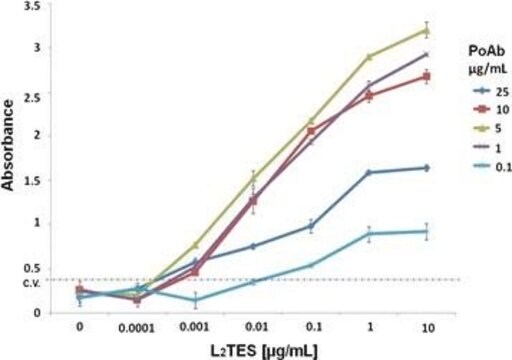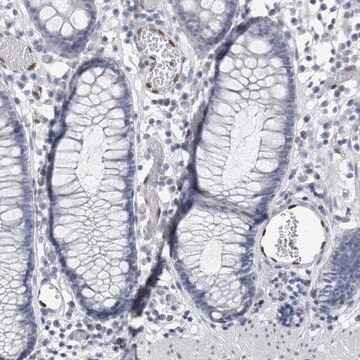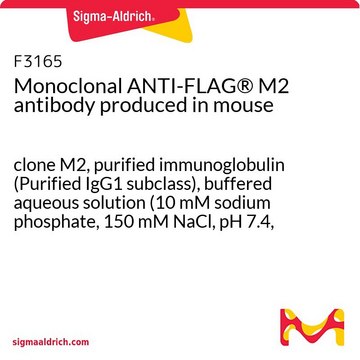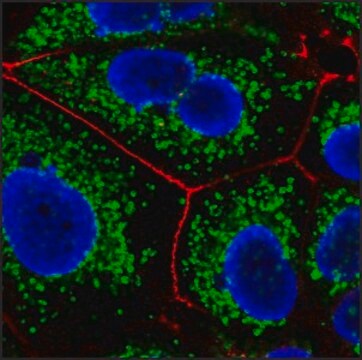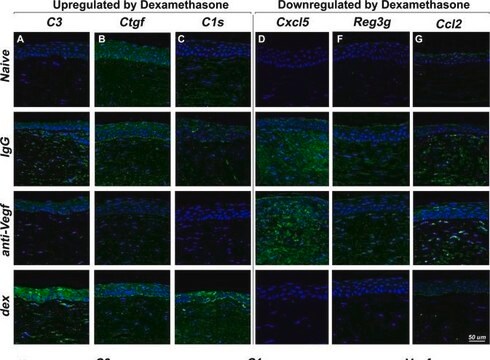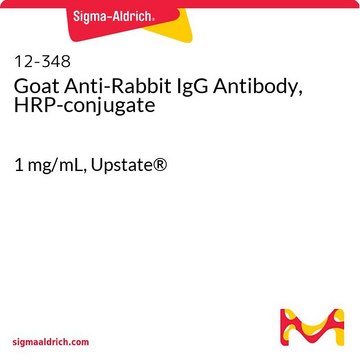Allgemeine Beschreibung
CF647 F(ab′)2 fragment of goat anti-mouse IgG is affinity-purified F(ab′)2 fragment of goat anti-mouse IgG labeled with a red fluorescent dye CF647, one of an outstanding series of CF dyes developed by Biotium. CF dyes are superior to both Alexa Fluor dyes and Cy dyes for antibody labeling by having combined advantages in brightness, photostability, and specificity.
Immunoglobulins (Ig) or antibodies are heterodimers of light chain and heavy chain. Ig′s are classified into five different classes according to their heavy chains types (λ, α, μ, δ, ε) namely IgG, IgA, IgM, IgD and IgE. The light chains can be either lambda (λ) or kappa chain(κ). IgG is about 150 kDa with two light chains each is about 25 kDa and two heavy chains connected in the hinge region is about 55 kDa. The light chains and heavy chains possesses variable domain (V) and constant domain (C) based on their function. IgG is further classified into two subtypes in bovidae namely IgG1, IgG2.
Spezifität
Binds with whole molecule mouse IgG and the light chains of other mouse immunoglobulins.
Anwendung
Anti-Mouse IgG (H+L), F(ab′)2 fragment, CF™647 antibody produced in goat has been used in immunostaining.
Biochem./physiol. Wirkung
Immunoglobulins (Ig) have the hypervariable antigen binding region in the N-terminal end with high affinity and specificity. IgG digestion by papain produces two fragment antigen binding (Fab) fragments and a single fragment crystallizable (Fc) fragment. The Fab fragment has complete light chain and variable and constant domain 1 (C1H) of heavy chain. The Fab fragments can bind to antigen. IgG digestion by pepsin results in one Fc fragment and a single dimeric F(ab)2 fragment. In Goat, the serum concentration of total IgG of normal adult is 19.97+1.55 mg/mL with predominant expression of IgG1. In goat, the IgG concentration is about 2.4-2.8 times greater in colostrum than in serum with IgG1 subclass accounting to 95-98%.
Leistungsmerkmale und Vorteile
Evaluate our antibodies with complete peace of mind. If the antibody does not perform in your application, we will issue a full credit or replacement antibody.
Learn more.Physikalische Form
Supplied in phosphate buffered saline with 0.05% sodium azide, 50% glycerol and 0.2% BSA.
Angaben zur Herstellung
Protect from light. The antibody solution should be gently mixed before use.
Rechtliche Hinweise
This product is distributed by Sigma-Aldrich Co. under the authorization of Biotium, Inc. This product is covered by one or more US patents and corresponding patent claims outside the US patents or pending applications owned or licensed by Biotium, Inc. including without limitation: 12/334,387; 12/607,915; 12/699,778; 12/850,578; 61/454,484. In consideration of the purchase price paid by the buyer, the buyer is hereby granted a limited, non-exclusive, non-transferable license to use only the purchased amount of the product solely for the buyer′s own internal research in a manner consistent with the accompanying product literature. Except as expressly granted herein, the sale of this product does not grant to or convey upon the buyer any license, expressly, by implication or estoppel, under any patent right or other intellectual property right of Biotium, Inc. Buyer shall not resell or transfer this product to any third party, or use the product for any commercial purposes, including without limitation, any diagnostic, therapeutic or prophylactic uses. This product is for research use only. Any other uses, including diagnostic uses, require a separate license from Biotium, Inc. For information on purchasing a license to use this product for purposes other than research, contact Biotium, Inc., 3159 Corporate Place, Hayward, CA 94545, Tel: (510) 265-1027. Fax: (510) 265-1352. Email: btinfo@biotium.com.
CF is a trademark of Biotium, Inc.
Haftungsausschluss
Unless otherwise stated in our catalog or other company documentation accompanying the product(s), our products are intended for research use only and are not to be used for any other purpose, which includes but is not limited to, unauthorized commercial uses, in vitro diagnostic uses, ex vivo or in vivo therapeutic uses or any type of consumption or application to humans or animals.


